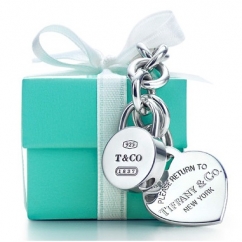Articles and News
EDITORIAL: TIFFANY PROFIT DROP IS MUCH ADO ABOUT NOTHING | January 18, 2012 (1 comment)

Merrick, NY—Tiffany’s announcement this month of lower-than-expected profits sent shivers through the luxury world. Despite positive economic indicators and solid comps from most other luxury retailers, pundits are already warning that it’s a sign of trouble in the sector.
Not so fast. Let’s peel back some layers and look at the whole onion before we decide if it’s rotten or not.
First, the numbers: Tiffany’s sales didn’t decline; they grew. In fact, they grew 7% over 2010, albeit, less than forecast. Overall comps grew 4%. Admittedly, its European sales fell—no big surprise, considering how many EU nations are facing serious financial straits. But sales were up everywhere else.
Tiffany’s North American sales grew a lackluster 2%, but honestly, how much newness have we seen from the retailer lately? In this editor’s opinion, there hasn’t been a “must have” new item from Tiffany in some time, at least not in its jewelry category.
Sales rose 18% in China, and 6% in Japan. While 6% is not the kind of robust increases many American luxury jewelers enjoyed over the holiday, it’s a respectable gain—especially in a country that had a devastating earthquake and tsunami just last year. Here, we wouldn’t expect an earthquake to affect the entire U.S. economy, but it certainly would affect the economy of whatever state it was in. The total land area of Japan is slightly smaller than California.
So what’s the all the drama? Pam Danziger of Stevens, PA-based Unity Marketing suggests the drop has to do with perception and conspicuous consumption. “The little blue box may be losing some of its luster, as affluent consumers shy away from more conspicuous symbols of affluence. Luxury consumers don't want to be seen as part of the much maligned '1%,' and this manifests as a preference for luxury goods that are individual, but not overtly status oriented," she writes.
Perhaps, but I think it’s a little premature. Though the Occupy movement is much quieter these days, it’s too soon to tell if the movement has run out of steam or if it’s just inside staying warm till spring.
Even so, Tiffany doesn’t serve the 1%. Harry Winston does. Graff does. But Tiffany doesn’t. Tiffany’s average sale is in the hundreds—not hundreds of thousands—of dollars. Approximately one-third of its sales come from silver. That’s a three-digit sale, not even four, let alone five or six. The jeweler may not be serving the full 99%, but it’s definitely not catering to the 1%.
Meanwhile, a just-released report from the Luxury Institute says that the Tiffany news resulted in a more than 10% sell-off of the firm’s stock, and had a spillover effect on shares of other luxury firms on fears that the iconic jeweler’s results could presage an overall slowdown in the luxury group.
Again, I believe it’s a little premature, reflecting Wall Street’s knee-jerk reactions that don’t take into account what’s really happening at the counter.
“Apart from Tiffany, other big names in luxury retail showed no evidence of weakness, with Nordstrom posting a December same-store gain of 8.7% and [same store] sales at Saks rising at least 5.8%,” says the report, adding that Nordstrom’s numbers actually were up 11% at full-price stores (vs. less than 1% at its Rack outlets.) Both Saks and Nordstrom cited strength in handbags and apparel, according to the Luxury Institute’s report.
And with more than two-thirds of prestige jewelry stores posting significant gains for holiday 2011, I believe this suggests again that maybe it’s the merchandise or even the marketing, not fear of conspicuous consumption, that gave Tiffany its lackluster performance here. Tiffany is a well-managed company, earning kudos for both its leading digital strategies and its proactive stance in areas of social and environmental responsibility. But it, like every other retailer, has occasional slumps where the product mix just isn’t inspiring and consumers decide to buy something else.
This article in Women’s Wear Daily suggests as much. With strong reports from the upscale stores, it’s not as if the high-end customer isn’t spending, says the paper. But things like iPads—a very “must-have” item—sit squarely in the same price space as a lot of Tiffany product.
“Tiffany's miss underscores the need for luxury retailers to create a customer-centric culture to deepen and strengthen customer relationships.Macroeconomic forces will not always be a tailwind for luxury and smart high-end retailers are training staff, upgrading Web and mobile offerings, and offering perks and privileges to reward loyalty and enhance the customer experience,” says the Luxury Institute report.
That’s true. Tiffany typically has done well in these areas, but other jewelers are catching up, making the retailer less unique in that respect. And other retailers—like Nordstrom—already are ahead.
That’s why, in my opinion, this profit-miss announcement is unique to Tiffany. It's a signal that the retailer needs to make some tweaks, but not the start of a downward slide for luxury in general.







